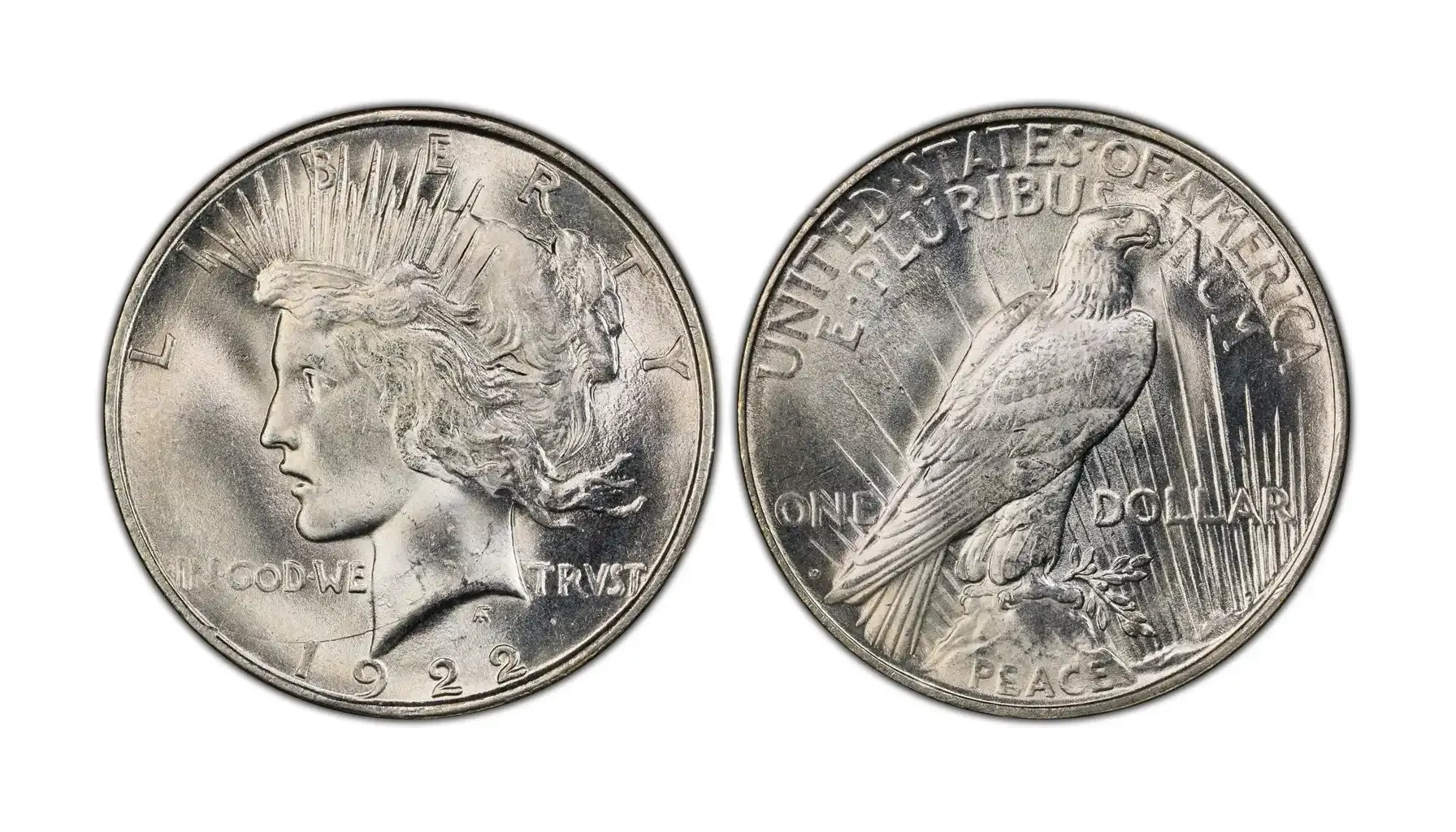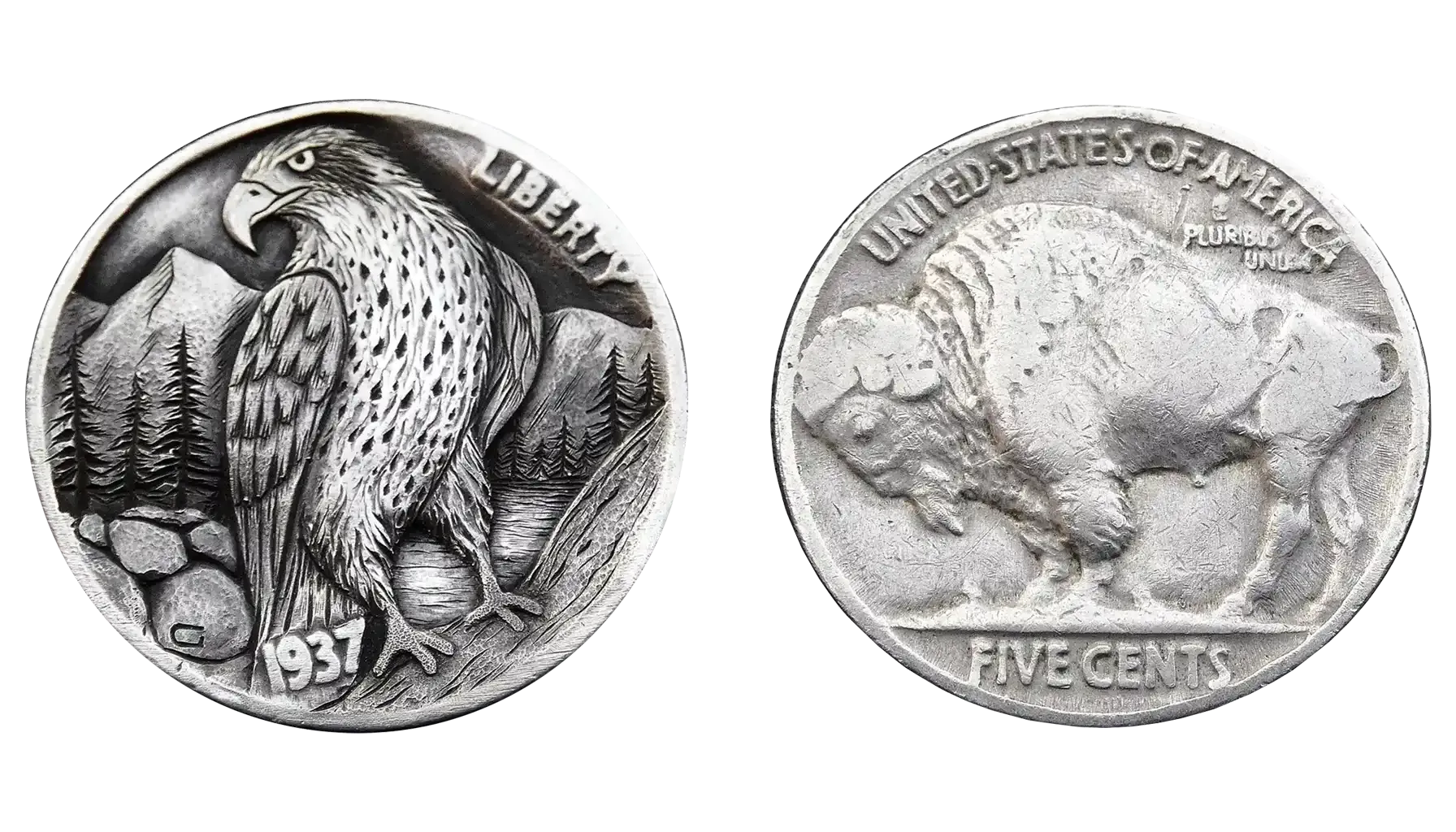Contents:
At the beginning of the era of wheat cents, there appeared a peculiar iteration that could not boast a traditionally arranged design, but more of a marketing product itself. The 1909 VDB Lincoln Cent has sparked more controversy, debate, and hype than most pieces of currency in American history.
So, what exactly happened? Why did a simple coin ignite such a controversy? And how did it become the "King" of Lincoln Cents? In this material, we are going to explore the main features that identify this coin as an exclusive item, explore its varieties, and define how valuable it can be in 2025.
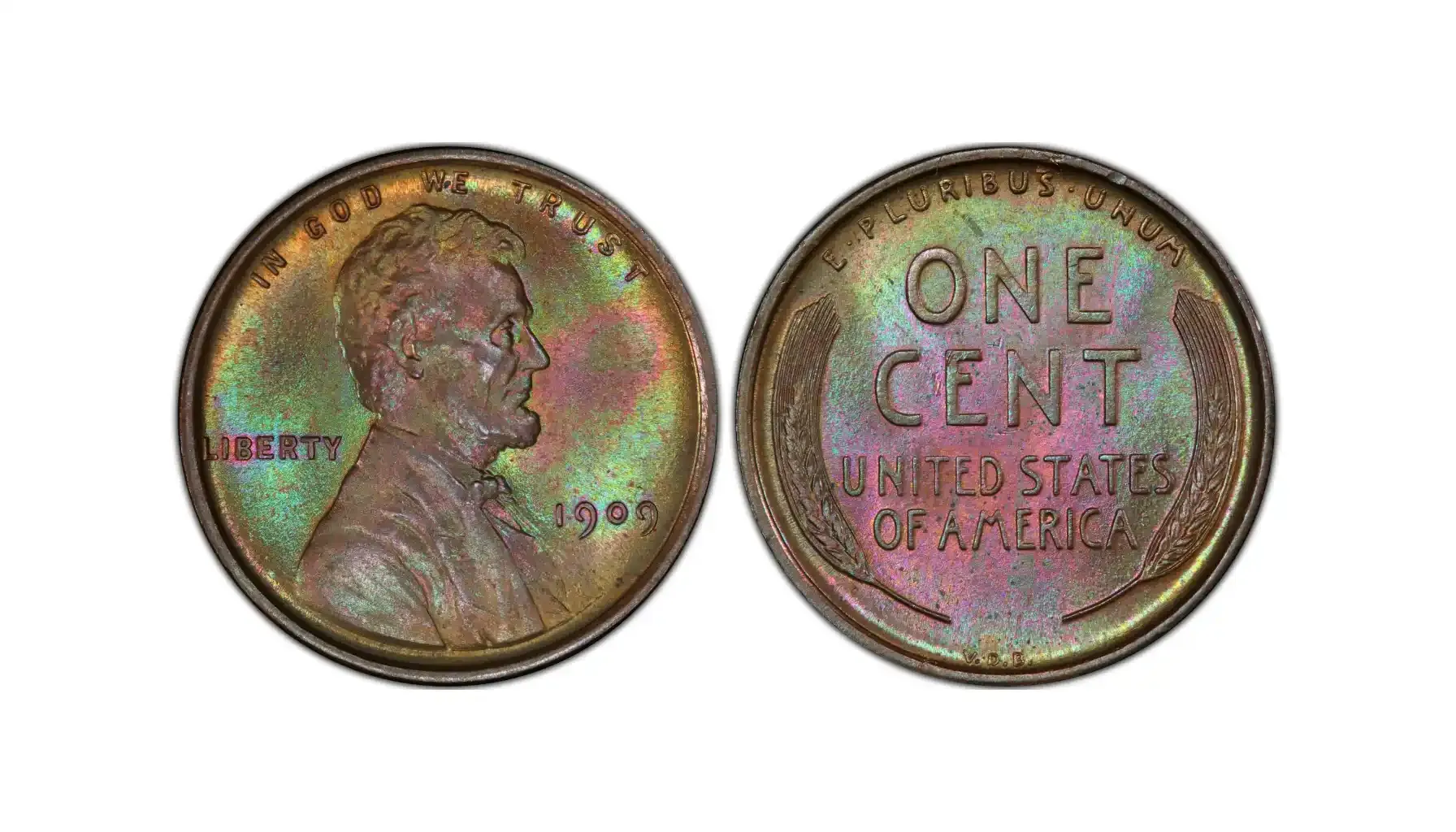
The Birth of the Lincoln Cent
Each centennial starts with a change. The same happened almost 100 years ago when the American coinage was yet to alter its traditions and start a new age of modern monetary creations. For many years before, US coins used to feature only allegorical characters, e.g., Lady Liberty, rather than actual historical figures.
However, everything changed in 1909. President Theodore Roosevelt expressed the idea of a full-scale coinage redesign to celebrate the artistic merit of the nation. It also affected one-cent coins meant to commemorate the 100th anniversary of Abraham Lincoln’s birth and his legacy.
The works of a young sculptor, Victor David Brenner, impressed Roosevelt, who was keen on making American currency more attractive. As a result, Roosevelt recommended Brenner for the duty of creating the new cent because he was blown away by the artist's skill and his ideas, not to mention.
Compared to earlier pennies, Brenner's design was completely different. For the first time in American history, the circulating money finally represented a real person with the coin's obverse featuring a well-detailed portrait of Abraham Lincoln. A new 1909 Lincoln penny received favorable reviews upon its release. A little detail, though, quickly caused a huge commotion: the initials “VDB” conspicuously visible on the bottom of the reverse side.
Related article: 1955 Wheat Penny Value.
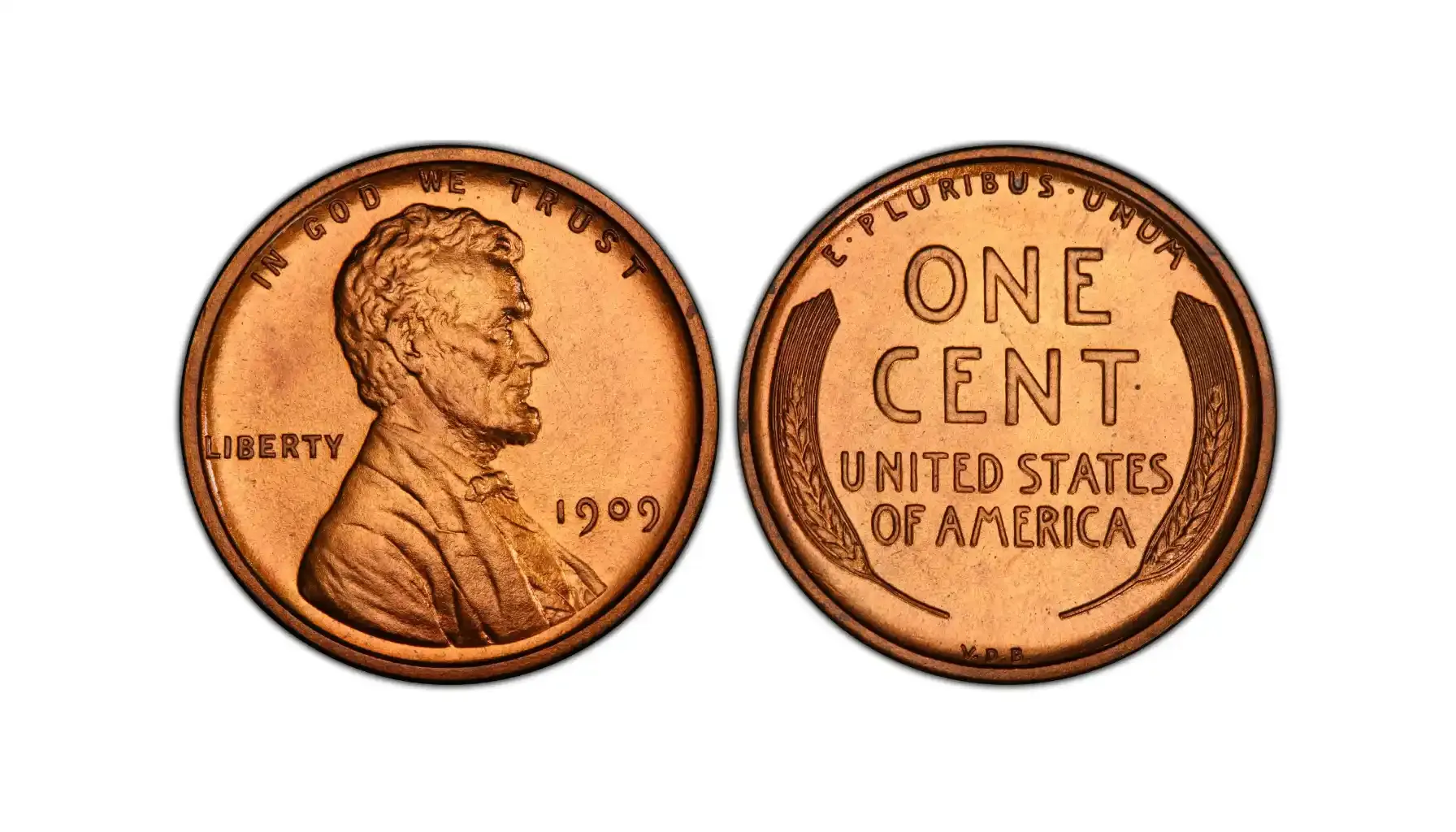
The VDB Controversy: Too Much Credit?
"V.D.B. Cent Doomed," the Washington Post proclaimed. What was meant to be a simple signature quickly became a national controversy. Actually, in 1909, there were released six different cents (namely two Indian Head cents and four Lincoln pennies), but only two of them bore the initials VDB. The critics argued that Brenner's initials were too noticeable and that the penny became a product of the artist rather than the symbol of the country.
Before this case, there were no other instances when a coin could feature such personal branding on its surface. The US Mint reacted promptly and mandated that the VDB initials be eliminated from all upcoming minting evermore. Within two months, the 1909 penny VDB was still in use, but new pennies were produced without them.
The controversies aside, the 1909 VDB penny's rarity and public response made it more desirable to collectors. During the period of withdrawal, people could spend hours just to get at least one instance and make a profit. And this lasted for many years. The years go by, the coin gets even more valuable than ever. This is the reason why some numismatists call it a king.
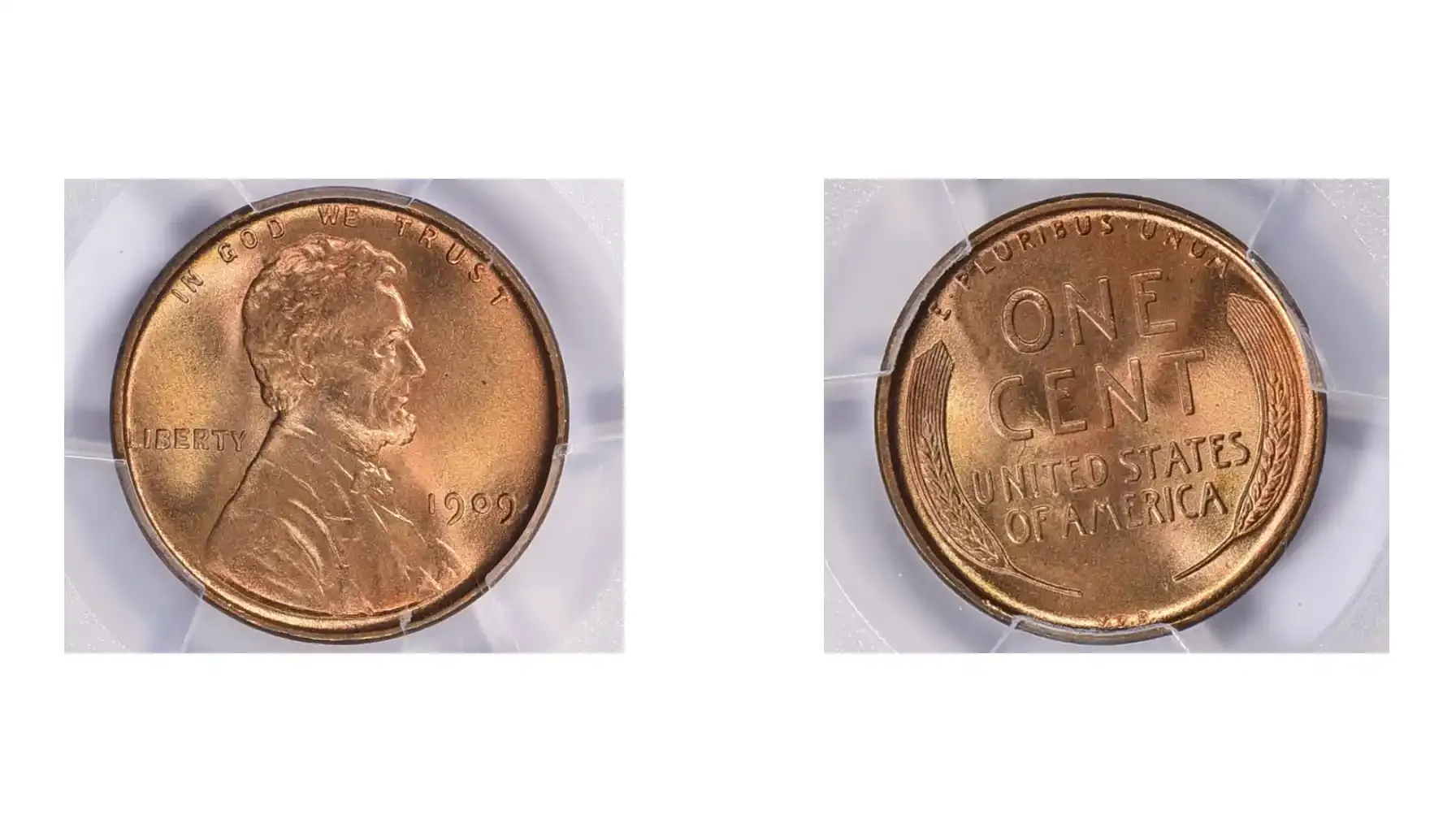
1909 Penny Variations
No matter how hated or praised the 1909 pennies can be, they are considered one of the most famous and iconic US coins ever minted. Although the most indicative part of the design is the initials placed on the reverse side along with wheat stalks and classic inscriptions, it is also notable for a fine portrait of Abraham Lincoln on the obverse. Here are the main specifications to note:
Features of the VDB Pennies | |
Designer | Victor David Brenner |
Composition | 95% copper, 5% tin and zinc |
Diameter | 19.05 mm |
Weight | 3.11 grams |
Edge | Plain |
Obverse Design | Abraham Lincoln’s portrait |
Reverse Design | Two wheat stalks with 'One Cent' and 'United States of America' |
Mint Marks | None (Philadelphia) or 'S' (San Francisco) |
V.D.B. Initials | Present on some 1909 coins, removed later |
*More detailed specifications of the coin and the corresponding 1909 penny worth can be found in the Coin ID Scanner app.
As for its official variations, there were only two major types featuring the initials. These were released by the Philadelphia and San Francisco Mints, respectively.
1909 VDB Penny
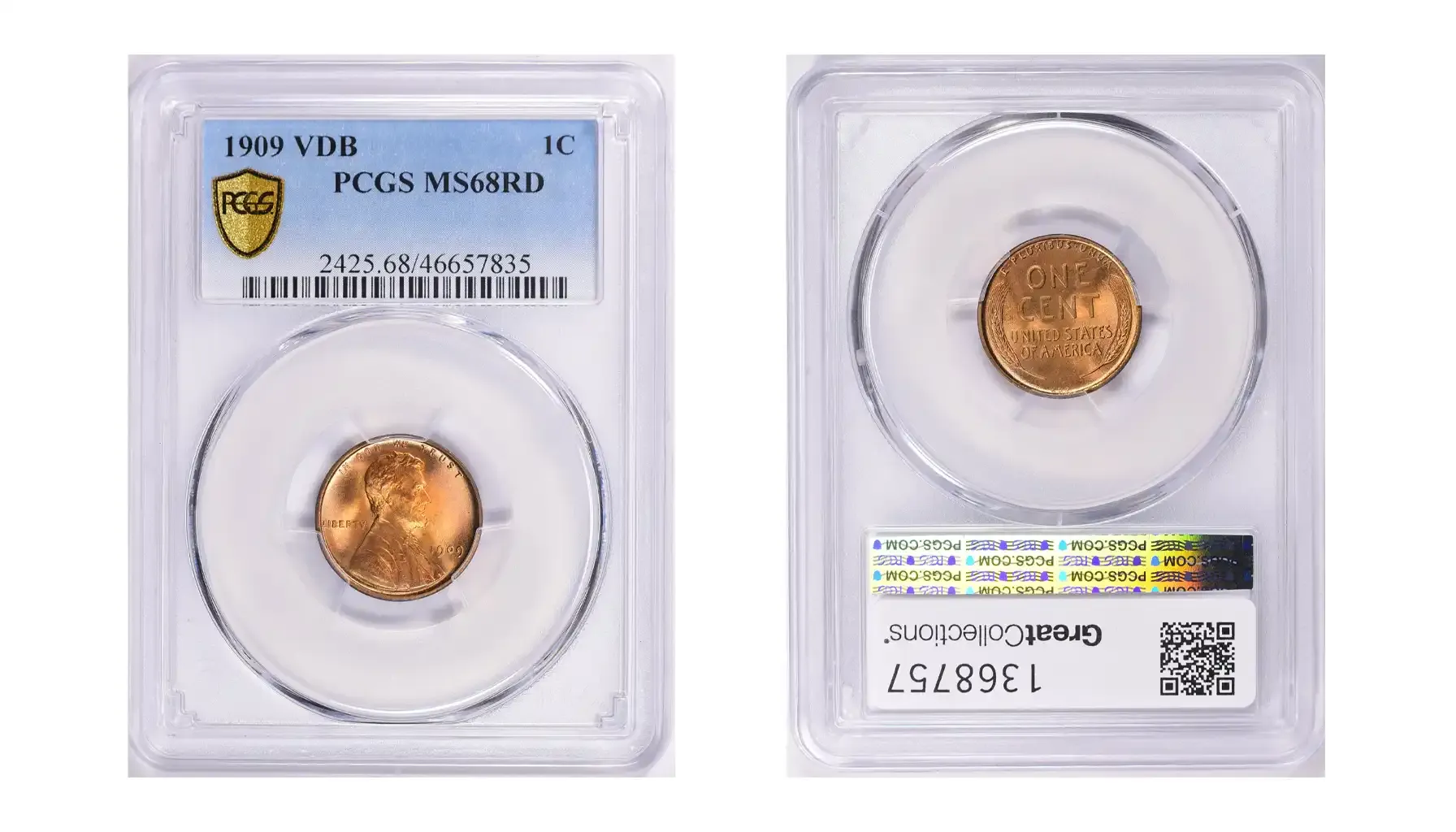
Mintage: 27,995,000
Mint: Philadelphia
Mint Mark: No Mint Mark
Highest Auction Record: $42,000
Grade: MS-68 RD
Graded by: PCGS
This is the typical 1909 cent that was struck at the Philadelphia Mint and bears the initials V.D.B. on the reverse, which is far more common than the rarer 1909-S VDB type.
1909 VDB Penny Proof
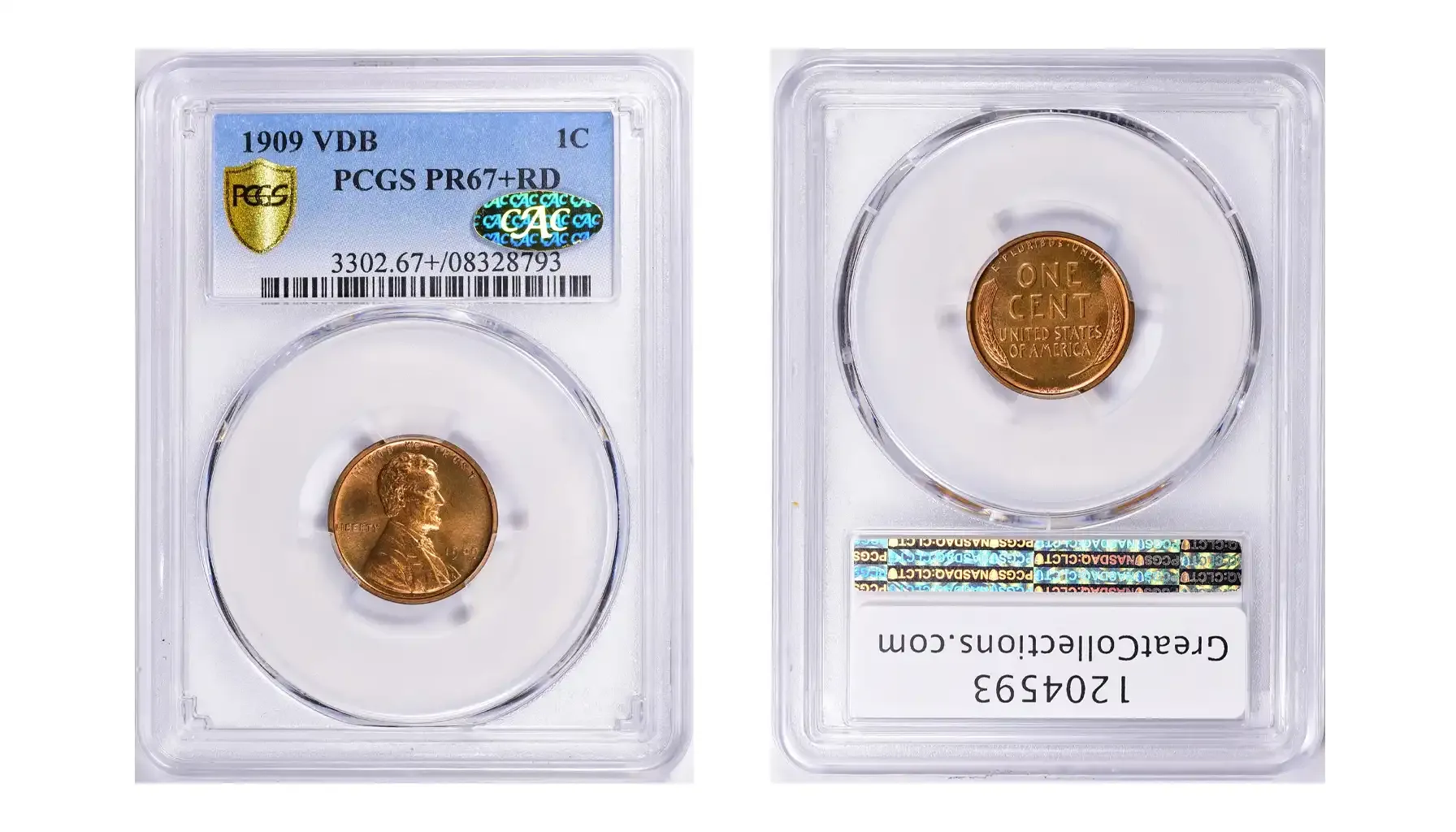
Mintage: 1,194
Mint: Philadelphia
Mint Mark: No Mint Mark
Highest Auction Record: $325,000
Grade: Proof-67+ RD
Graded by: PCGS
This is the 1909 VDB Penny in Proof format, struck in limited quantities for collectors, and is considerably scarcer than the more common business strike version from the Philadelphia Mint.
1909 S VDB Penny
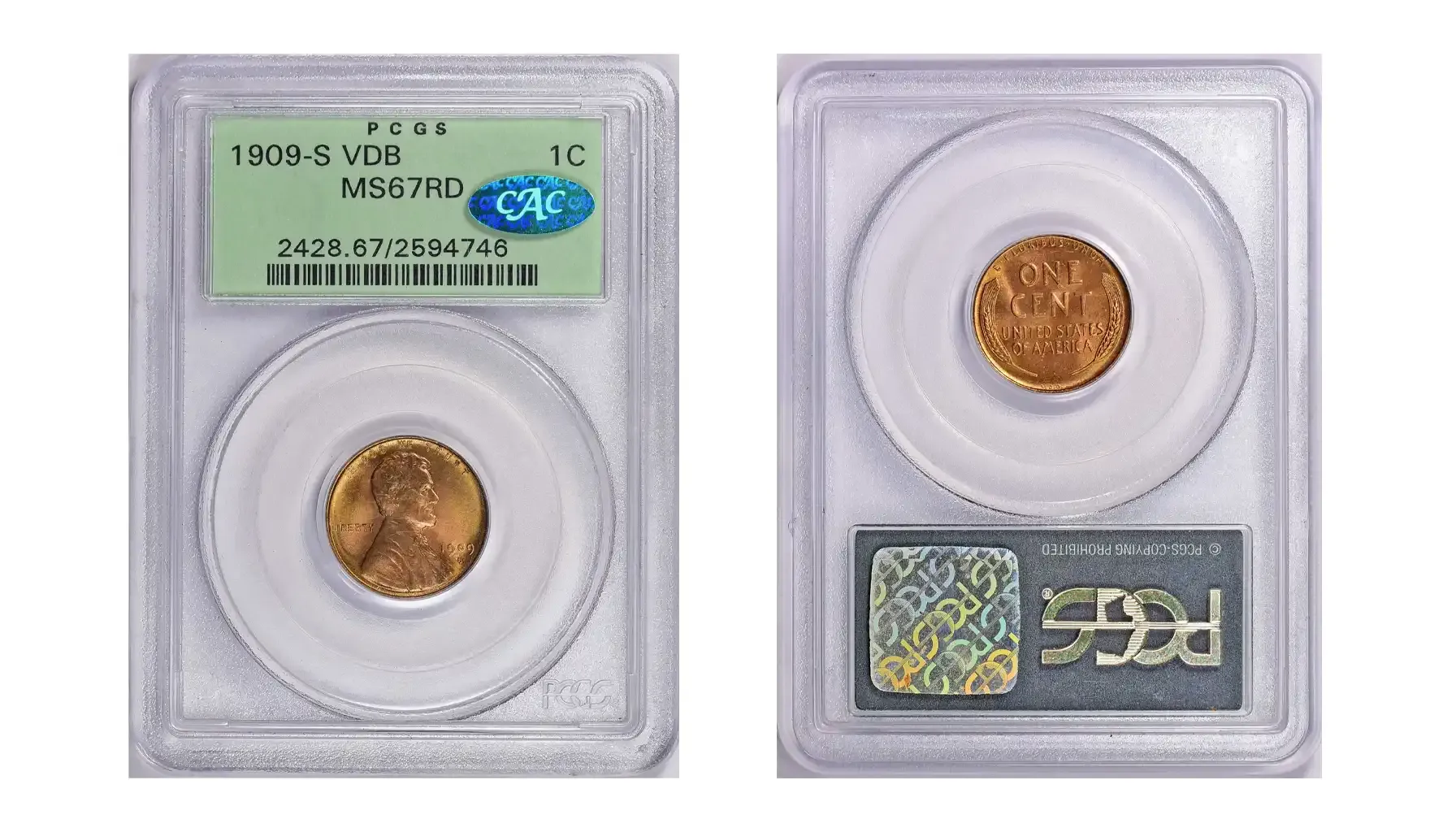
Mintage: 484,000
Mint: San Francisco
Mint Mark: “S”
Highest Auction Record: $307,000
Grade: MS-67 RD
Graded by: PCGS
The 1909 S penny, on its part, is an extremely sought-after instance, particularly in higher grades, because of its extremely small mintage. This version is rather expensive and can boost the worth of any collection for good.
Apart from these, there were released two more Lincoln cents, yet they did not bear any initials. We shall talk about them in another article.
1909 VDB Penny Error
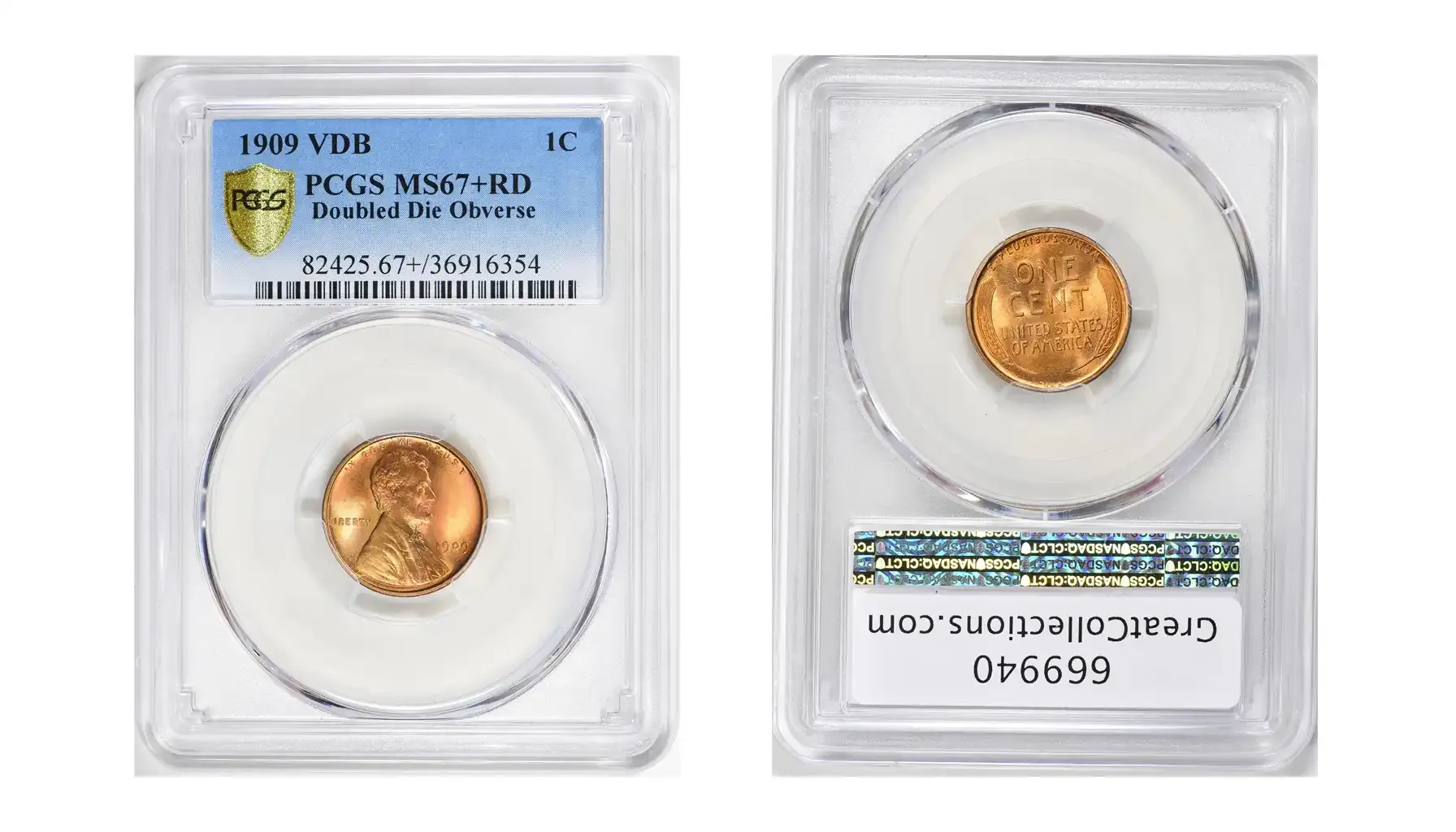
Mintage: N/A
Mint: The Philadelphia Mint and San Francisco
Mint Mark: None or “S”
Highest Auction Record: $22,250
Grade: up to MS-67+ RD
Graded by: PCGS, NGC, or CAC Grading, Virginia Beach
Although there were only two types and a small period of mintage, the chances of getting erroneous instances were low. However, as we like to state, every coin is not immune to imperfections, which makes them even more valuable, by the way.
Among the most intriguing errors is the 1909/8 overdate, where a "1908" was overstruck with the 1909 date. Due to its extreme rarity, this error is overly valuable among collectors of all sorts. The double die obverse, which was discovered on some 1909 pennies, is another noteworthy flaw (as usual, one may say).
Just remember: VDB coins themselves are expensive, but their deviated or proof versions are even more valuable!
The Value of a Legend: How Much is a 1909 Penny Worth?
The 1909 VDB penny value is a relatively stable variable, since most of the time, it has been high in Mint State grades. Here is a quick reference table with estimated 1909 penny values by type. Please note that the prices are based on the latest PCGS Price Guide, and the table reflects information for the highest grade possible.
Variety | Color Designation | Comments | Estimated Value |
1909 VDB 1C Regular Strike | Brown (BN) | Oxidized over time | Up to $185 |
Red and Brown (RB) | Retained some original red luster | Up to $23,000 | |
Red (RD) | Retained at least 95% of its original copper-red mint luster | Up to $60,000 | |
1909 VDB 1C Proof | Brown (BN) | Oxidized over time | Up to $45,000 |
Red and Brown (RB) | Retained some original red luster | Up to $275,000 | |
Red (RD) | Retained at least 95% of its original copper-red mint luster | Up to $380,000 | |
1909 VDB 1C Doubled Die Obverse | Red and Brown (RB) or Red (RD) | Features a noticeable doubling in fine quality | Up to $2,000 |
1909 VDB 1C 1909/8 Overdate | Red and Brown (RB) or Red (RD) | Features an overdate error in fine quality | Up to $2,000 |
Do not know what RB, RD, and BN really mean? Still wondering how these prices are formed? And want to know more about wheat pennies in general? Learn more about the world of numismatics with Coin ID Scanner, an innovative app that offers numerous features, from coin identification to market analysis and collection management. Try now, and let your numismatic journey begin!

